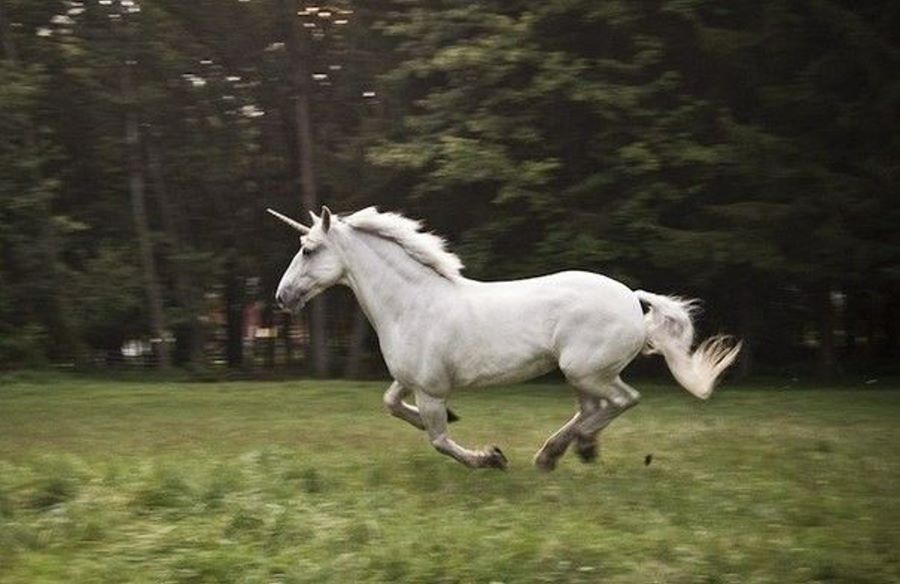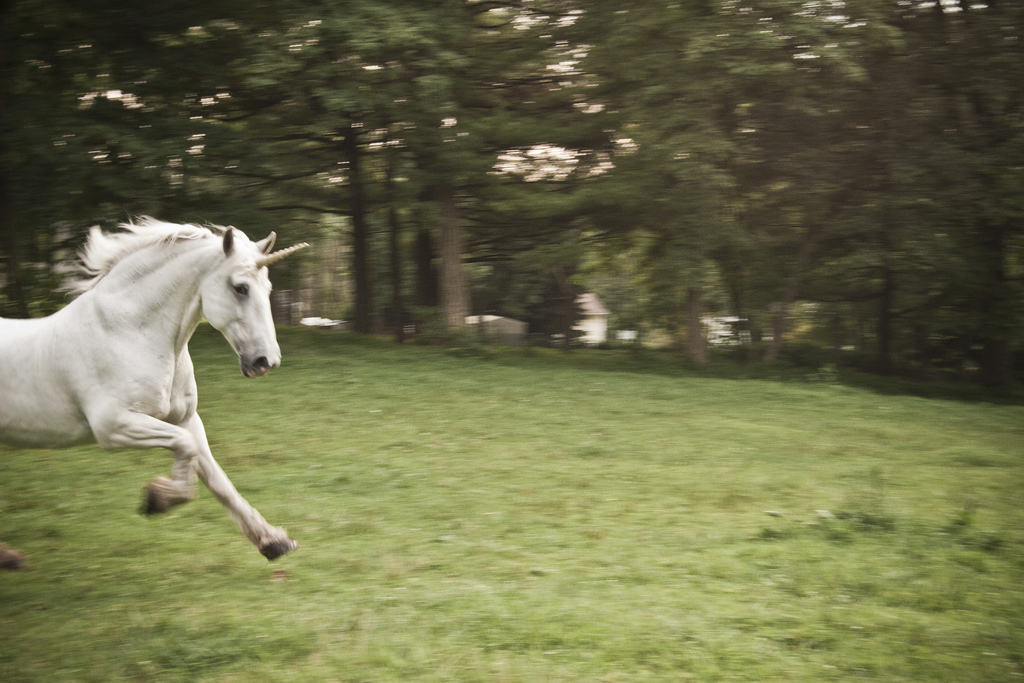
Unicorn Genome
Sequenced
Researchers
release a draft genome
of the famous horned
equine, cause stir in
evolutionary and
philosophical circles.
Walter Lee
1 April 2013
A high-quality draft of
the unicorn genome is
released by the Equid
Sequencing Consortium in
today’s issue of
Philosophical Transactions
in Genomic Sciences.
Researchers have
previously deciphered the
genome of the domestic
horse and reported partial
sequencing data from
Przewalski’s horse and the
Tibetan wild ass. The
unicorn, however, is the
first horned equine to be
sequenced. Scientists hope
that the new data will
explain origins of the
horn and help identify key
genes that drive horn
development.
A whale in
the equine tree
Dr. Elizabeth Siva and her
group EMBL-EBI focused on
phylogenetic analysis of
the data. “Our
calculations suggests that
the unicorn diverged from
a common ancestor with
other modern members of
the Equidae family, such
as zebra and horse, around
14 million years ago.”
It’s around this time, she
said, that entire
chromosomal fragments,
most closely related to
known narwhal, entered the
unicorn lineage. The
origin of the unicorn’s
horn has long been a topic
of debate in the unicorn
field, with many
considering it to be yet
another striking example
of convergent evolution.
“What this looks like,
though,” says Siva “is a
genuine instance of
intercrossing between a
terrestrial and marine
mammal.” Although she
expects continued
skepticism from members of
the convergence camp,
she’s confident that
further analysis will only
strengthen initial
conclusions.
Technological
advances
Professor Matthew Hofer,
who has led the unicorn
sequencing project since
2011, says the work
represents a major
technological milestone.
His group at UCSC faced
numerous challenges not
presented by more widely
recognized species, whose
genomes they have
deciphered in the past.
“We struggled for months
to develop adequate
protocols for sample
collection and DNA
extraction. We just didn’t
encounter these sorts of
problems with species for
which existence has been
firmly established.”
Crossing fields
Scientists also expect
their finding will
contribute to
long-standing
philosophical debates. A
colleague for Professor
Hofer’s in the Department
of Philosophy, Scott
Trimpton, says the work
supports a theory
according to which
nonexistent things are
still real [5]. But, she
cautions, further
scholarly thought must be
devoted to the matter.
This is not the first time
research into horse
genetics has transcended
academic disciplines.
Previously, German
researchers studied
coat-color genetics of
pre-domestic horses to
show that paleolithic cave
paintings were more
literal representations of
contemporary animals than
previously thought [6].
References
- Deal, N.S.,
Catabia, D., Hofer, M.,
and Siva, E. (2013) The
Sequence of the Unicorn
Genome. Philosophical
Transactions in Genome
Sciences, 17(8), 156-68.
- Wade, C. M.,
Giulotto, E.,
Sigurdsson, S., et al.
(2009). Genome sequence,
comparative analysis,
and population genetics
of the domestic horse.
Science, 326(5954),
865–867.
- Luo, Y., Chen,
Y., Liu, F., et al.
(2011). Mitochondrial
genome sequence of the
Tibetan wild ass (Equus
kiang). Mitochondrial
DNA, 22, 6–8.
- Goto, H.,
Ryder, O. A., Fisher, A.
R., Schultz, B.,
Kosakovsky Pond, S. L.,
Nekrutenko, A., &
Makova, K. D. (2011). A
massively parallel
sequencing approach
uncovers ancient origins
and high genetic
variability of
endangered Przewalski’s
horses. Genome biology
and evolution, 3,
1096–1106.
- Russell, B.
(1905) On Denoting.
Mind.
- Pruvost, M.,
Bellone, R., Benecke,
N., et al. (2011).
Genotypes of predomestic
horses match phenotypes
painted in Paleolithic
works of cave art.
Proceedings of the
National Academy of
Sciences of the United
States of America,
108(46), 18626–18630.
Copyright ©
2014 Seven
Bridges Genomics.
All rights reserved.

|




